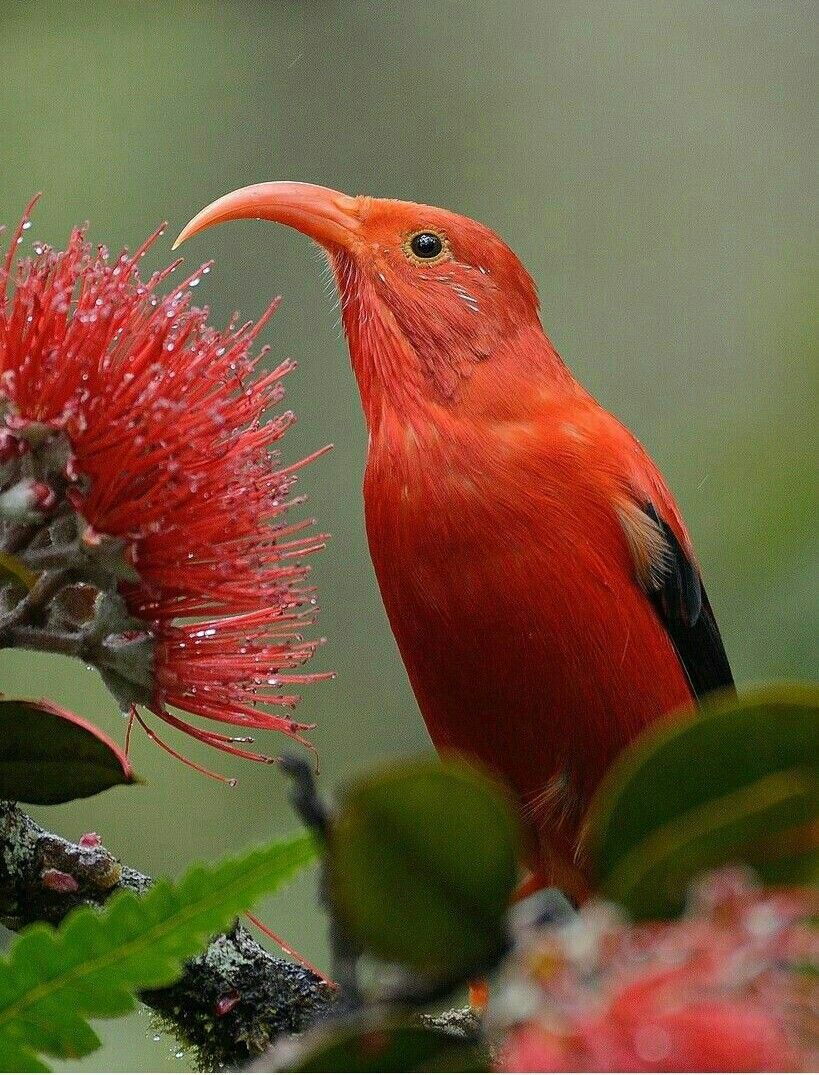
The 'I'iwi or Scarlet Hawaiian Honeycreeper (Vestiaria coccinea)
Another threat has been the spread of introduced diseases, particularly avian malaria (Plasmodium relictum), which is spread by mosquitoes. In a series of challenge experiments involving avian malaria, more than half of the 'I'iwi tested died from a single infected mosquito bite. Thus the 'I'iwi generally survives at higher elevations where temperatures are too cool for mosquitoes, and like many disease-susceptible endemic birds is rare to absent at lower elevations, even in relatively intact native forest. The 'I'iwi were also removed when the islands forests were cut down and were replaced with farms, plantations, towns, and alien forests. These birds are altitudinal migrants; they follow the growth of flowers as they go from high elevation to low elevation forests. It is thus exposed to harmful low elevation disease organisms and high mortality This migration also makes it hard to assess the total populations on the islands. The birds are able to migrate between islands and it is because of this that the 'I'iwi has not gone extinct on smaller islands such as Moloka'i.
Advertisements
10 February 2022
Advertisements



